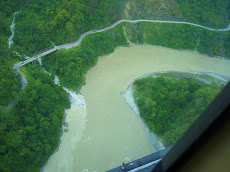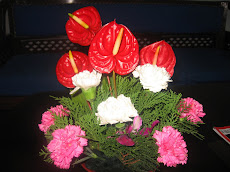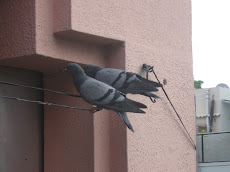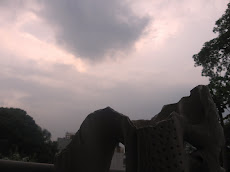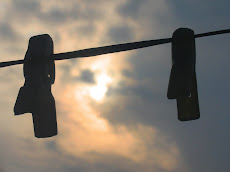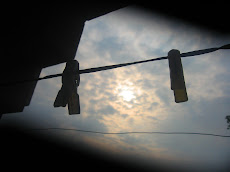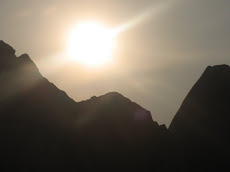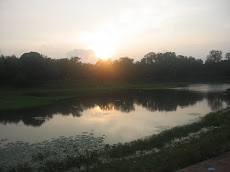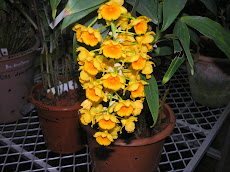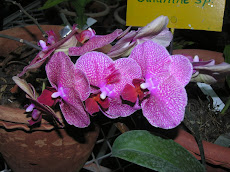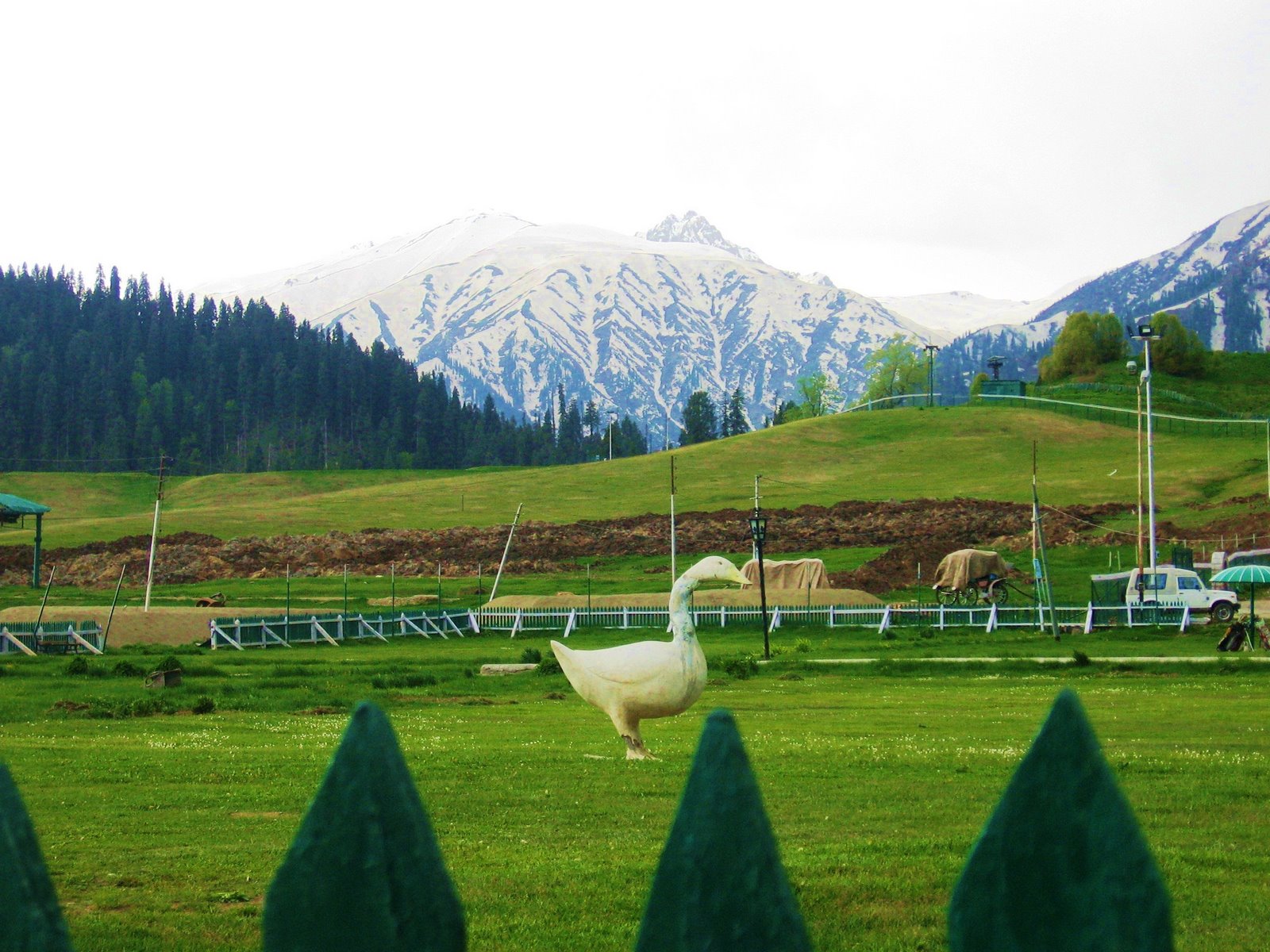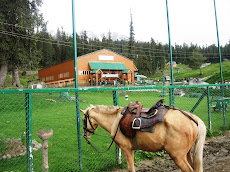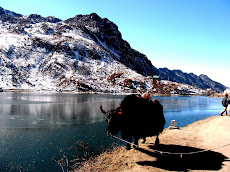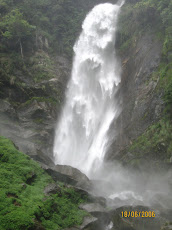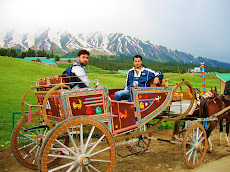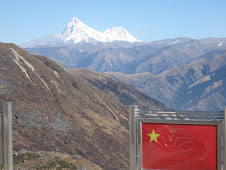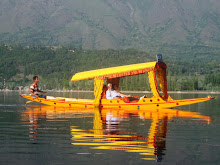Thursday, October 30, 2014
None Of The Above (NOTA): Will it succeed?
Considerable
Work seems to have been done over the last two decades in the crucial area of
electoral reforms. Like any other field
of activity touching the interest of the common man, many initiatives were not
liked to begin with but with the passage of time the stake holders in question
had no choice but to accept and tolerate, more so, in view of rising awareness attributable
to rapid rise of satellite television, judicial activism and more recently,
RTI.
Of
all the measures, EVM has been the real mile stone or game changer, side by
side with substantial control over muscle power and sizeable suppression of
liquor power. Despite all this, some
unfair means still go on, whether it is the phenomena of silent booth capturing
or someone else helping an illiterate woman right on the EVM without any
objection from the Presiding Officer or agent of a candidate. Also showing might at the entrance of a
centre or a booth with a view to deter the poor and socially disadvantaged,
continues. It would be impossible to
have a complete fair play situation even under the changed circumstances. But as long as vote percentage multiplies and
order is maintained, that should help.
The
latest landmark or measure has been the availability of NOTA (None of the
Above) option with the voter. It is
being implemented following a path breaking ruling of the Apex Court dated 27th
September 2013 in Writ Petition (C) No. 161 of 2004. ECI was directed to make
necessary provisions in the ballot papers/EVM’s for NOTA option so that electors
who do not wish to vote for any of the candidates can exercise their right not
to vote for any candidate without violation of the secrecy of their
decision. Thus the Supreme Court upheld
the right of voters to reject all the contesting candidates, saying it would go
a long way in cleansing the political system of the country.
Before
the NOTA became a reality, voters casting negative votes were required to enter
their names in a register and cast their vote on a separate paper ballot. Altogether eleven countries including
Bangladesh already have allowed NOTA.
Hence, it is not peculiar to the Indian system.
As
it does not require involvement of the Presiding Officer, it should serve the
intended purpose and not block or postpone a decision. Rather, it is expected to work for
facilitation of same.
During
the elections to the Assemblies of MP, Chattisgarh, Rajasthan, Mizoram and
Delhi held in 2013, more than fifteen lakh or 1.5% of the total voters used the
NOTA option for the first time.
Similarly, in the course of recently concluded elections to the Assembly
of Maharashtra, 0.9% or 4, 82, 574 voters exercised this option, while in
respect of Haryana, merely 0.4% or 53, 608 opted for it. In Maharashtra, tribals used it most,
reportedly to express their dissatisfaction with Government policy. The voters who preferred it were more than
the votes cast for the established parties, such as, CPI (M), S.P., Swambhimani
Paksha etc. NOTA, in addition, was found
to be more prominent in Marathwada area.
The
trend of NOTA in respect of two constituencies of Haryana (89 & 90 A.C.)
during the Assembly elections was also gone through and analysed. In the first constituency, NOTA had fifth
position in a nine cornered contest. The
average preference for NOTA per round was 74 out of an average count of 8584
votes in one round in 89 AC while these figures were 72 and 10654 respectively
in 90 AC having twelve contestants. The
first constituency, incidentally was completely urban.
NOTA
goes on to show disenchantment and dislike for the candidates put up by the
major State and national parties on the one hand and a general apathy or lack
of interest for asserting one’s rights for bringing change. If the emerging trend continues, it may lead
to notification for polls yet again in some constituencies, resulting into more
expenditure, law and order complications and confusion. However, it would be too early to seek a
review of the decision. One will have to
wait and watch by giving adequate strength to the feeling that the gamut of
politics badly needs good, educated and experienced persons, who have to work
with as also to take work from the public servants, many of whom being
shirkers.
Thursday, October 23, 2014
SURAJKUND,DOWN MEMORY LANE
Following
the hectic poll process of 24 days a well deserved relaxation was called for. One
could have stayed back in the NTPC complex, Mujedi (Neemka) or in the quiet
abode in the heart of Faridabad but after a review and rethinking I settled for
inspiring and isolated setting of Hotel Rajhans at Surajkund.
2. The
evening could be very partially utilized. After sipping self prepared tea,
Chinese dinner was a quiet affair. Less of salt and sauce could have done, though
the care and courtesy of the staff was outstanding. Going down the memory lane,
I witnessed the remarkable decade or more old theme State structures in semi-darkness
situation. Thereafter, a gentle stroll around the hotel corridor took place. Taking
a round of large and impressive swimming pool area was exciting at night. One
fondly remembered one's first swimming pool 'bath' of 1996.
3. During
the current stay I occupied Room 101.Thirteen years ago some other comfortable
room was allotted to me as a guest of Haryana Tourism. After detailed
discussions and persuasions, we from Sikkim had won the 'bid' to become the
theme state of the then internationally famous Mela. Offering me hospitality
was part of the deal. My last visit to this place was in Feb.2003,when
Uttarakhand as a theme State had erected a permanent replica of Badrinath
Temple. Navraj Nain, my dynamic batchmate who was M.D.,Haryana Tourism had played
her role to perfection.
4. When I am
scribbling these lines at dawn in a corner of the lawn overlooking dried up
Surajkund, far off in the area peacocks have not only got up but by their soothing calls are attempting to wake up all. This
large National Bird has its own charm and charisma. One saw scores of them
walking gently all over the place in Rashmipuram for little over 3 weeks. I also
saw exactly 20 of them in Kheri Kala village of Tigaon, one evening while
retreating from a long but satisfying tour. They are very good to look at. But
the moment you try to get closer they sense it instantaneously, speed up their
walk and simply fly off in no time. You cannot even adjust your camera angle. Closest
shot I have managed, was once each in Rastrapati Bhawan in 2013 and in a heritage hotel in
Jaipur in Feb.2014.Latter looked like a pet.
5. My first
'revisit' is to the Sikkim Gate, I went out of way to build as a gift of the
theme state in 2002. I was so happy when it appeared before my eyes after good
11 years . I saw it , went near it, touched it , took a round prior to taking
photos from different angles. Felt elated and satisfied. Afterall , the Mela
authorities had managed to retain its true colour including over the ceiling ,
having commited a mistake once in the past.
6. The mud
walls and parapets close by, reminded me of the eight lucky signs and various Buddhist
icons and symbols , we had got painted with care and interest. Five giant fibre
masks were especially fixed at prominent points .A painting showing early morning
view of Mt. Kanchenjanga over the backdrop of’ Natyashala’ was an outstanding
piece of art. It was now no where to be seen as the venue itself was shifted.
The ‘Apna Ghar’ , wherein the lifestyle of three ethnic communities of Sikkim
was depicted, was being demolished or repaired for a fresh use . The new Apna
Ghar of blue and white colour, as opposed to mud walls of earlier version, was
a poor reflection of its old , serene self . It did not have a tinge or
semblance of tradition. Instead, it looked like a portable Tent House creation.
7. The
Chorten (memorial) , the additional structure gifted by us, though maintained
well , had lost its original white colour . The present pink coloured piece was
also devoid of its miniature statue of Lord Buddha . A glance of nearby stalls
and the’ Chaupal ‘right opposite, brought back fond memories of complementary
stalls made available to our craft persons and handloom workers as also
unimaginable international exposure to the dancers and performers. All this
happened upon incurring a meagre expenditure of Rs 7 lakhs . Apart from ensuring
a good market ahead for our products and giving me a different kind of job
satisfaction , the opportunity in Feb 2002 enabled me to get a documentary made
on our rare participation in addition to writing the first book by me on the magnum
opus of art and craft world that Surajkund fair had become by then.
8. One also
quickly saw a couple of permanent structures left behind by the theme states
since the year 1989.Being attached to the place, I cannot resist the temptation
to offer comments on the present state of the theme structures. On the positive
side, Vishnupur Gate of West Bengal, Danteshwari Gate of unified MP, replica of
Shah Hamdam Dargah of J&K, facade of Badrinath Temple of Uttarakhand, Kangla
Sanathong of Manipur, Char Minar of Andhra Pradesh, Arjuna's Penance Wall of
T.N.,Trimurti of Elephanta Caves of Maharastra and Rang Ghar of Assam not only
impress in terms of upkeep but they turn out to be fine specimens of art &
craft.
9 .While the
Kottayambalam Gate of Kerala and a non-descript Gate of Chattisgarh together
with a replica of a chariot kind of fort need to be repaired and restored, the
original pink colour of Gujarat Gali has been substituted by a coat of mud. On
the whole, it looks neglected and deserted. It is bound to be dilapidated soon.
The entire village has been kept clean and green with bright signages. However,
building of a wide central road could have been avoided. Neither it should give
an urban look, nor should it bolster the spirit of fast drivers. The main Kund
too has dried up. It needs to be revived. Further, looking at the things in
retrospect, it appears as if the very concept of Theme State is getting eroded,
if not exhausted.
10 .Having
said so, I am reminded of a relevant and pertinent question posed by our only
late child, as a student of Class VIIth in 2002-"When the organisers run
short of the theme states, what will they do ?"Instead of I finding an
answer despite thinking and pondering over, he himself responded the very next
day in form of a suggestion-"They should go for theme countries in the
next round." Probably he meant countries with a rich art and craft
traditions.
ARE SURAJKUND
ORGANISERS LISTENING ?
Tuesday, October 21, 2014
Tuesday, October 14, 2014
WILL MISSING CHILDREN GET THEIR DUE NOW ?
Day in and day out, for various reasons, children, the most
loveable and innocent lot, are found missing. Most of them fall in wrong hands
in the prosperous pockets. Parents of such unfortunate offsprings only can feel
as to where it pinches and how it pinches. Needless to say, due to them a
number of professions and industries thrive, such as, Bidi and Fire Cracker, flesh
trade, restaurants, hotels and what not. Films have not only taken a cue but
have also highlighted the phenomenon, apart from minting money from such themes.
Owing to feudal nature of our social system, most of us did not even realize if
there was some violation somewhere till same was pointed out, till public
interest litigation by an interested person led to some Court order or ruling.
Having realized the gravity
and enormity of the situation, the Supreme Court has issued detailed guidelines
on 14/11/2002 in Writ Petition No. 610 of 1996 (Horilal vs.C.P.,Delhi).It led
to setting up of a special Cell on the issue in CBI and constitution of a
Committee in NHRC in 2007 which also issued a series of guidelines relating to
missing persons desks in police stations, inspection of the places employing
children by the Dist.administration, mandatory reporting within 24 hrs to the
NCPCR, active involvement of Punchayati Raj bodies and Municipalities, Resident
Welfare Associations, and NGO’s, focused reporting by the media, regular
sharing of information by the states, etc.
Despite meetings, conferences and reviews the issue of missing
children continues to be grave. In view of the fact that it is also a human
rights issue, it should be considered so by all the stakeholders-Government at
all the levels, NGO’s or society at large. The number of children engaged as
domestic help and bonded/child labour, afterall, is mind boggling, while
conviction rate in identified cases is not even 1%.
Simply reporting is not important. They have to be traced, guided
or educated and then rehabilitated. There is also an immediate need to pinpoint
run away children, those found abandoned, neglected children and the vulnerable
category found roaming at melas, traffic junctions, bus stands and railway
stations. Last named group, invariably lands up in illegal factories and
brothels.
In this depressing backdrop it is heartening to note that Sri
Kailash Satyarthi, Indian Child Activist and Ms. Malala Yousafzai, Pakistani
teen activist are going to be jointly awarded the coveted Nobel Peace Prize for
2014 for their laudable works on promoting child rights in the "troubled
sub-continent"'. K.S., a former Electrical Engineer from Vidisha in M.P.is running
an NGO-Bachpan Bachao Andolan" since 1980 for rescuing children from
forced labour and trafficking. Malala,the youngest ever person to get the award
survived a devastating Taliban attack two years ago. She has been advocating
education for girl child side by side pursuing her own school studies in
Birmingham ,U.K.
The jury of the Norwegian Peace Prize Committee has felt that “the
prize was to be awarded to both for their struggle against supression of
children and young people and for the right of all children to education.’’ In addition,
the Committee is of opinion that Satyarthi has maintained the tradition of
Mahatma Gandhi and has headed various forms of peaceful protests. Satyarthi,
whose NGO has reportedly rescued over 80,000 children from forced labour and
trafficking, has reacted by saying that this global recognition would encourage
him into further action to try and eliminate child slavery.
It is a matter of strange coincidence but pride that two
luminaries from the sub-continent have been chosen for a common prize at a time
when ties between the two neighbours have touched a low point. Rather, intermittent
firing from across the border has affected 700 houses in three border Districts
of J&K. Needless to say, children and senior citizens are the worst
affected lot.
It is equally perplexing to note that Malala, who was nominated
for the same prize in 2013 when her wounds were
still fresh and thereby she was not in a position to muster enough
courage and conviction to address a world gathering ,has not done anything
substantial in one year ,yet her claim to fame this year became much more
stronger.
Thirdly, since the prize is proposed to be given jointly, it would
be unfair to equate Satyarthi's long struggle in his field to the
"beginning" just made by the youngster. There are many other unsung
and unreported young heroes and heroines like her ,but,but,but........ Idea is
,nonetheless, neither to ignore her trauma nor belittle her acts of bravery, subsequent
to the lethal attack on her head and shoulder. She could survive in a situation wherein the phrases mercy and
compassion are not supposed to be heard
.Do justice in the name of Jehad, kill innocent people for tiny issues ,such is
the slogan of the self proclaimed agents of God.
But for an anonymous diary in the form of a blog published between
January and March,2009 on BBC Urdu,this heroine of a Pashtun folk tale would
not have attracted any public attention. She is supposed to have indicated how
girls were made to struggle for getting education in the Taliban controlled
Swat Valley.She would speak her mind freely and fearlessly.
It is not that the women and children in this beautiful valley are
suppressed more than their counterparts in Afghanistan but the latter, one supposes,
donot have any courageous spokesperson of the kind of Malala. Strangely, otherwise
immune and ineffective Govt.of Pakistan not only provided her the best medical
treatment in the country and abroad ,it also conferred the National Peace Award
on her prior to her being nominated for the International Children's Peace
Prize.
To sum up, suffering of the children in general and those who
languish in bondage in the brick kilns, stone kilns, roadside eateries, cottage
industries as also the “decent families” is likely to be better heard and
responded to with the announcement of this years Nobel Prize. Satyarthi, an
activist of three decades has rightly stated that it is a curse on the face of
the humankind that children are born in such a state of tension and
violence.When will the estimated 16 Crore children get liberated ,we need to
ask ourselves.It is certainly a blot on the country, if not only on humanity.
Talking of facts and figures,it is after a long gap of 35 years
that an Indian ,after Mother Teresa has been chosen for his work not exactly on
peace but against a sustained activity that has propensity to disturb peace.
Yet the majority do not bother as long as they can avail of the comforts and
pleasures of life at the cost of little children.
Mahatma Gandhi was nominated more than once for the Prize but was
never conferred. So Satyarthi is perhaps
right in saying that “Had it gone to the Mahatma before me ,I would have
been more honoured”.
Tuesday, October 7, 2014
Mental Poverty In The Midst of Economic Prosperity
One has not come across such a hot, sultry and irritating
September and October. It may be owing to 12 % deficient Monsoon. Going through
the heat and dust, therefore, in the thick of election process in this booming ‘Nagri’
of real estate is an experience in itself. Nilgais, Peacocks, Koels, Crows and
several other species of birds in the artificial green surroundings, however, tend
to brighten up the spirits at dawn and dusk. If you watch them closely, they do
have the power to inspire and energize
you.
Electoral momentum is yet to pick up in towns and
villages, though in Assembly elections, issues are supposed to be more intense
and focussed. But party flags are fluttering and graffiti is being seen with or
without permission. Deep inside, away from the wide highways,
sometimes full of garbage on the sides, one notices palatial houses with latest
tiles and fittings even on boundary walls. Marble and Granite floors and walls
are very common. Unfortunately, the imposing dwelling units have few occupants.
White Cranes are visible in every nook and corner. Despite sour ground water,
agriculture is a profitable proposition. Assembly of mostly senior citizens,
sometimes enjoying hukkas is the characteristic feature in the central places of
the villages. Women in “purdah’’ do make an appearance, off and on.
Real Estate market may be reported to be down but massive
constructions in unthinkable places (close to stinking and filthy drains and
the so called Agra Canal) continues to be a thriving industry. Not everyone
buys a house or a flat for living purpose.
The decisions are taken, mostly by the Delhi-ites, from an investment
angle. People of different income groups travel long distances on a day today
basis, risking their health. Materialism is all pervasive. If stress level
rises, shelter in the Ashrams of innumerable Babas and Sadhavis is taken.
Faridabad, once part and parcel of Gurgaon District and
having a population of about 20 lakhs, serves as a hub of 25,000 small scale
industrial units. One can think of its adverse impact on environment. Many
global giants have set up their units here. It manufacturers 48% of cars,11% of
tractors and 39% of motor cycles in the country. It is a leading contributor to
the country in production of food-grains and milk.
All said and done, Haryana is one of the most developed
and progressive states. It has a rich cultural heritage and is considered a
land of warriors and hardworking farmers. It has excelled in many fields-
agriculture, industry, sports, irrigation etc. The 3rd highest per
capita income after Goa and Delhi (Rs. 1,33,236/- per year ) gives it a coveted place.
Free computer
education is imparted from 6th to 12th standards and S.C.
children only get free bicycles when admitted to VIth class. State is the
highest exporter of one of the best qualities of Basmati rice. Afterall, it has
a plethora of cultivated land with high cropping intensity. Farmers also get cheapest electricity in the
country according to Government sources. Sports persons have a ‘win Medals, win
Jobs’ scheme for the last 9 years and 494 award winners are reported to have
been offered government jobs, thus far.
Despite all these noticeable and favourable development
indices, the state has one of the lowest male-female ratios in the country-834
females per 1000 males. Abortion, pursuant to the inhuman sex determination
tests goes on smoothly. Due to this skewed sex ratio, brides are reported to be
in short supply. It causes deep
concern. Something is wrong somewhere. The educated and the intelligentia know
it, privately feel sorry but are unable to change the age old practices and the
complex mind set. Even the Prime Minister, in one of the election meetings, called
it shameful and coming in the way of the dignity of women. Someone has to bell
the cat, therefore.
It is amply clear that women are given less importance
than what they deserve. The sphere of election management is no exception. In
2005, services of only one woman SDM was utilized in the adjoining District.
Over here, as on date, only one Master Trainer from the fairer sex has been put
on duty to brief the male domain of the presiding officers. Neither confidence
is expressed by the men folk, nor there is an element of assertion on the part
of women. The number of women teachers and head mistresses in Government
schools, nevertheless, has shown an
upward trend. Though, they appear sincere and dedicated, they do not seem to be
having much say in decision making. As a matter of relief, one is yet to hear
about the influence of the Khap Panchayats in Faridabad. Though they claim to
take up and decide only the social issues, some of their leaders are reported
to be indulging in politicking in the typical traditional and rural settings.
When State Government lists its achievements and
accomplishments, it is silent on women issues. Can society move ahead with
hundreds of women “purchased” from several parts of country? And once brought,
these Molkis or Paros are mis-treated, sold again and again, to live a miserable
life, ultimately. They become child
producing machines, even while being kicked like a football. They have to fend for themselves.
Very few of them, as per reliable reports, have been
rescued. Though “married” to a buyer,
they posses no legal right. As a result,
some places in the region have also become transit points for trafficking.
Sadly, it is happening for years with full knowledge of authorities. Some of them
perform multiple functions- household chores, working in fields and at night, they
get ‘transformed’ into the role of a wife. Paros have become a tradition, therefore,
hardly any complain is lodged with police. It is a blatant example of
objectification of human dignity. Neither the State nor the National Human
Rights Commission takes cognizance. AND thus, the exploitation and suppression
of the most important segment of humanity is allowed to continue.
Friday, October 3, 2014
MANGLAYA NAMAH : MARS ORBITER MISSION (MOM)
There is no end to human endeavour or research. Some attempts, experiments and discoveries, therefore,
do leave an impact. Launched from
Sriharikota on November 5, 2013, India’s Mangalyan is one such act or happening. Upon traversing over 650 million kms, it has scripted history of a different kind.
Though, after entering the Martian orbit at 7.55 hrs on 24th
September, India became only the fourth country or agency to achieve the rare
feat, the NASA of U.S.A., European Space Agency and RFSA of Russia, the earlier
achievers, had actually failed in their maiden attempt. India, on the contrary, wrote its name in
golden letters by becoming the first country to enter the orbit of Mars (515
kms away from its surface) in its very first attempt. Lessons learnt from other
missions may have also contributed.
(2). Expectations
The 475 kg Orbiter is slated to take 77 hours or 3.2
Earth days to rotate around Mars over the next six months. Charter is to study
its surface and mineral composition. It
will also scan its atmosphere with a view to explore the possibility of Methane
Gas which may perhaps give a clue pertaining to life sustaining elements.
(3). Mystic of Planets
When I was a child, we were taught
about existence of nine planets in the vast Solar System, some with Satellites,
some without one. It would appear to be a fascinating and perplexing world. Now
with the change of definition of ‘planet’, the number has come down to eight. Pluto no longer qualifies. As of now, based on scientific evidence, only
Earth is inhabitated by human beings. It
is but natural that every now and then there has been an urge to explore the
world beyond the atmosphere of Earth. The urge is awefully expensive but with
all the potentials of a high reward.
(4). Coming back to Mars mission (a side lined
activity), India did not want to lag behind a few selected countries. Having fine tuned its prowess gradually in
satellite launches, a mission to Moon was not only launched but successfully
accomplished a few years ago. Close on
the heels of this encouraging success story, journey to Mars, the fourth planet
from the Sun and the seventh largest, was meticulously planned with a
shoestring budget of Rs. 450 Crores ($74 million) as opposed to $ 671 by NASA’s
mission to this planet. Owing to distance and little outcome of earlier
efforts, there were usual doubts and apprehensions.
(5). Why Mars?
Mars
is supposed to be a red planet. The March month derives its name from it. Revival of interest on voyage to Mars is both
due to relatively “Shorter” distance from Earth and the planet being the most
favourable place in the Solar system, apart from Earth, for human habitation. It
is also interesting to note that the surface area of Mars is about the same as
that of Earth, though in size, Earth is bigger.
Its atmosphere is supposed to be colder and dryer. The planet, visible with an unaided eye at
night time has two tiny satellites by the names of Phobos and Deimos.
(6). Kudos from P.M.
The Prime Minister, donning a red jacket, symbolic of the
“red” planet on the occasion of entry of Mangalyan into the orbit of Mars has
rightly described the MOM as a Pan-Indian effort. As per his apt and extempore comments, of
the 51 such missions, mere 21 had succeeded and that ensuring the travel of an
incredible distance of over 650 million or 65 Crore kms, our scientists have
gone beyond the boundaries of human enterprise and imagination. He not only
praised their efforts sincerely but also spared sufficient time to shake hands very
warmly with almost all of them, even going to the extent of giving autographs
on any kind of writing material or surface, they could lay their hands on. This is something which has never happened at
the level of a Prime Minister. It was a precedence of the sorts.
(7). Latent
setback to other players?
The U.S. Government together with the Govt. of China has
lost no time in praising the stupendous achievement of ISRO Scientists. Though they seem to have expressed happiness,
yet, the development, per se, may not be to their liking. For, it once again
shows India in bright light and that the development has the potential to throw one more challenger to
the powers that are supposed to matter, otherwise. The bargaining or
blackmailing skills (even if occasional), may get relegated to the background
for the time being. Not only the event is a significant landmark in the annals
of history, it reflects our strength and commitment to knock at other Planets
and celestial bodies, apart from inspiring the Indian Scientists to make even
greater strides, in the words of President Pranab Mukherjee.
(8). Boost to One’s Ability
The mere fact that India succeeded where China failed, is
likely to convey a firm and candid message. Once again it has been proved that
we do not require any Western assistance in pursuing our scientific aims. This is also a remarkable success story of a
Government enterprise, though enjoying autonomy. The command, motivation and exemplary team
spirit, displayed by Dr. K. Radhakrishnan, the ISRO Chairman, has made it
happen beyond all odds ever since he floated the idea in November 2009, which
had the blessings of Shri A.B. Vajpayee, the former P.M.
(9). How the space craft will respond in the
days to come will have to be closely monitored and analysed. The images of surface of Mars to be sent by
the colour camera of ‘Yan’ will create a good deal of curiosity, apart from
providing a lead for further research and investigation. Are they going to be
different from the ones beamed earlier? How long the craft will last, also remains to be
keenly seen. All said and done, it has
opened a new frontier for us.
Subscribe to:
Comments (Atom)


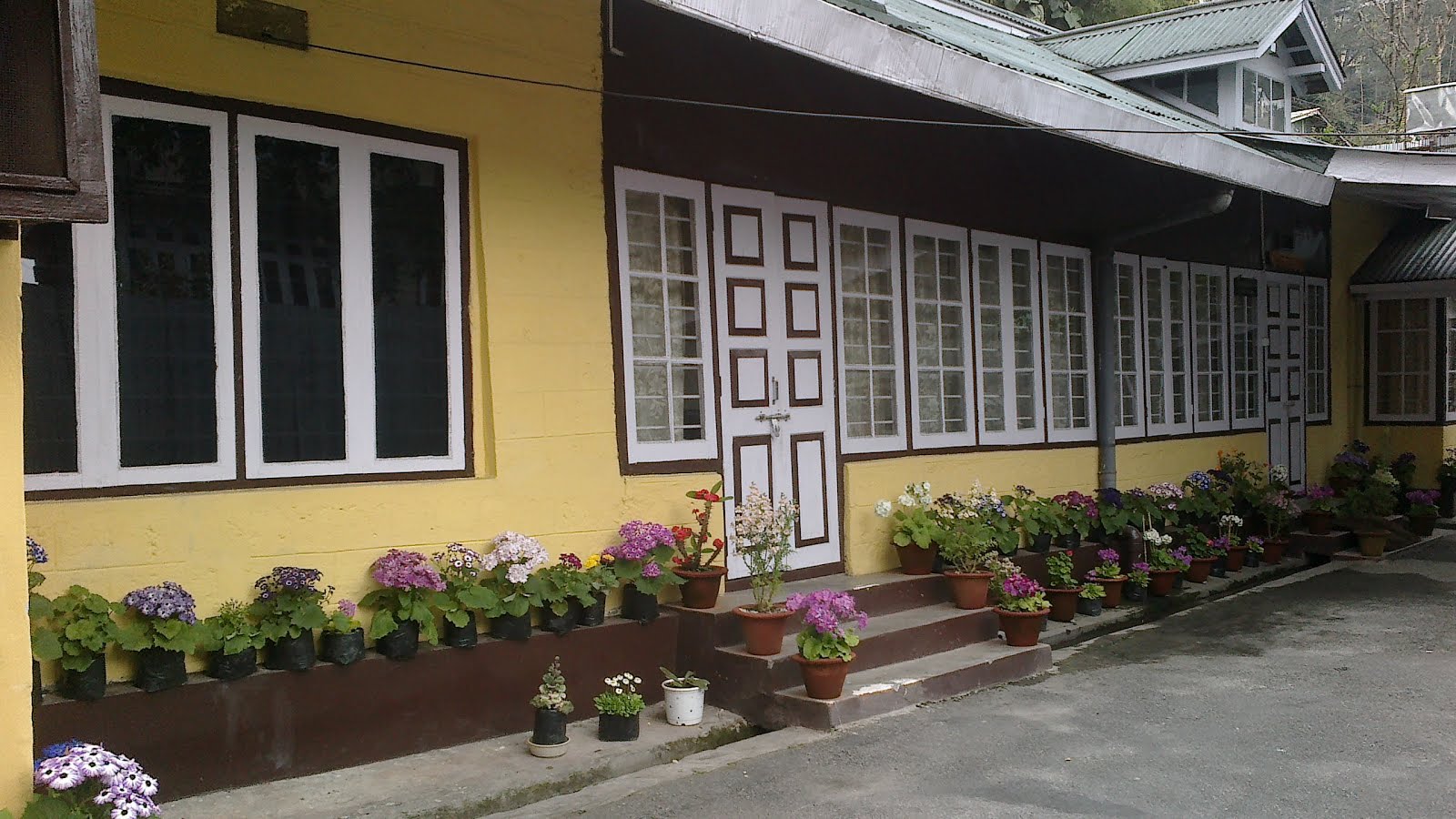







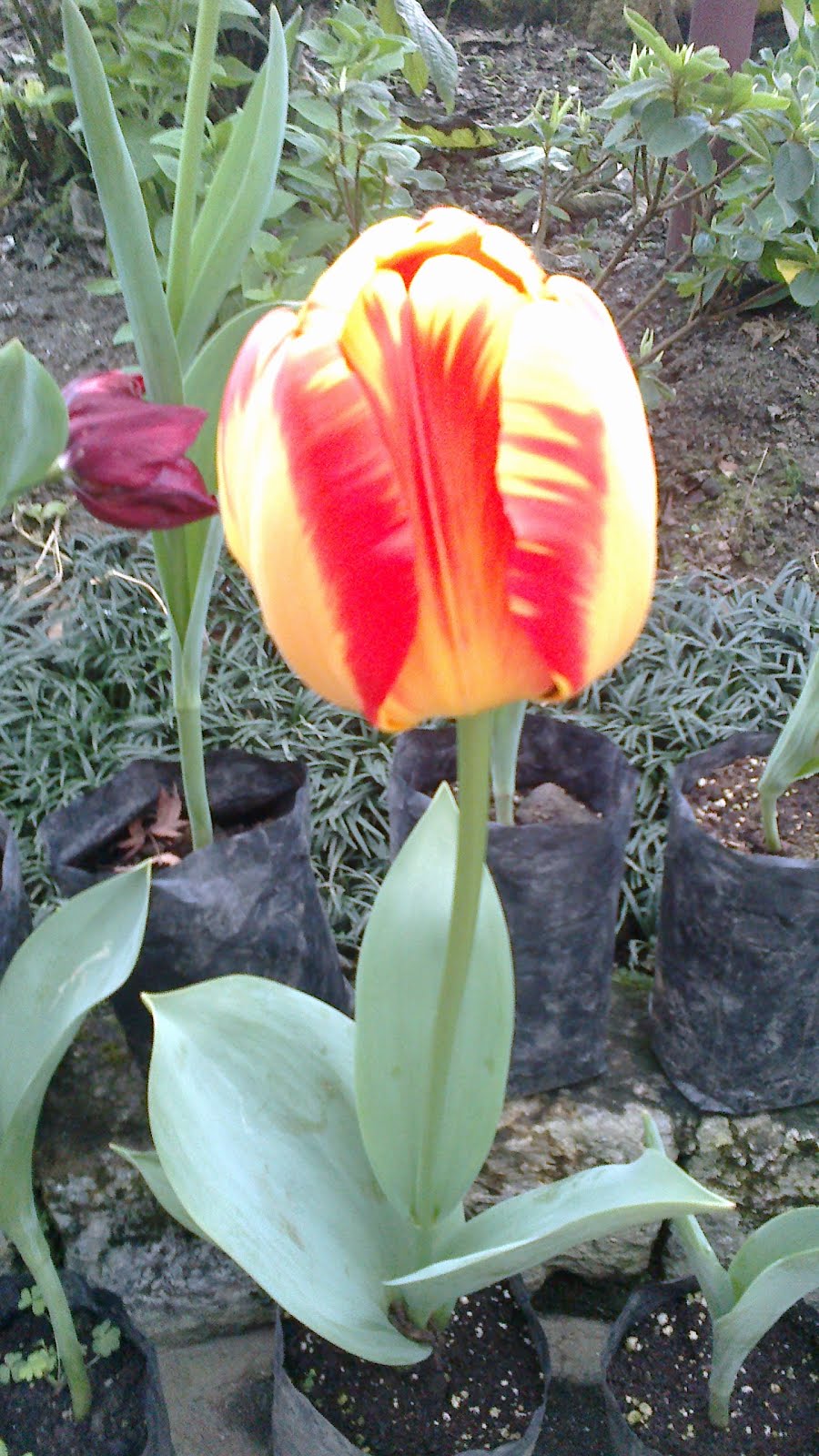
















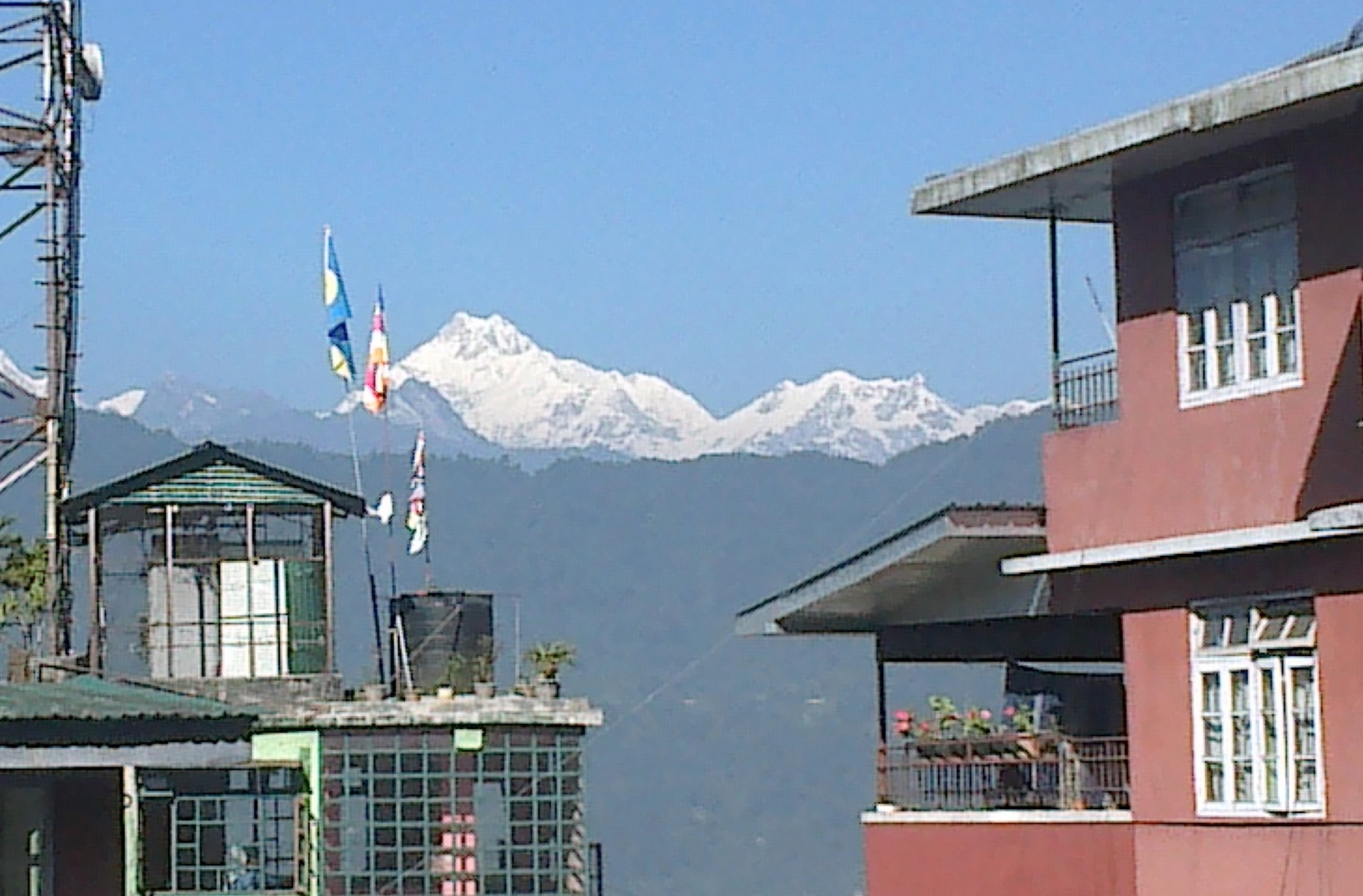



















































































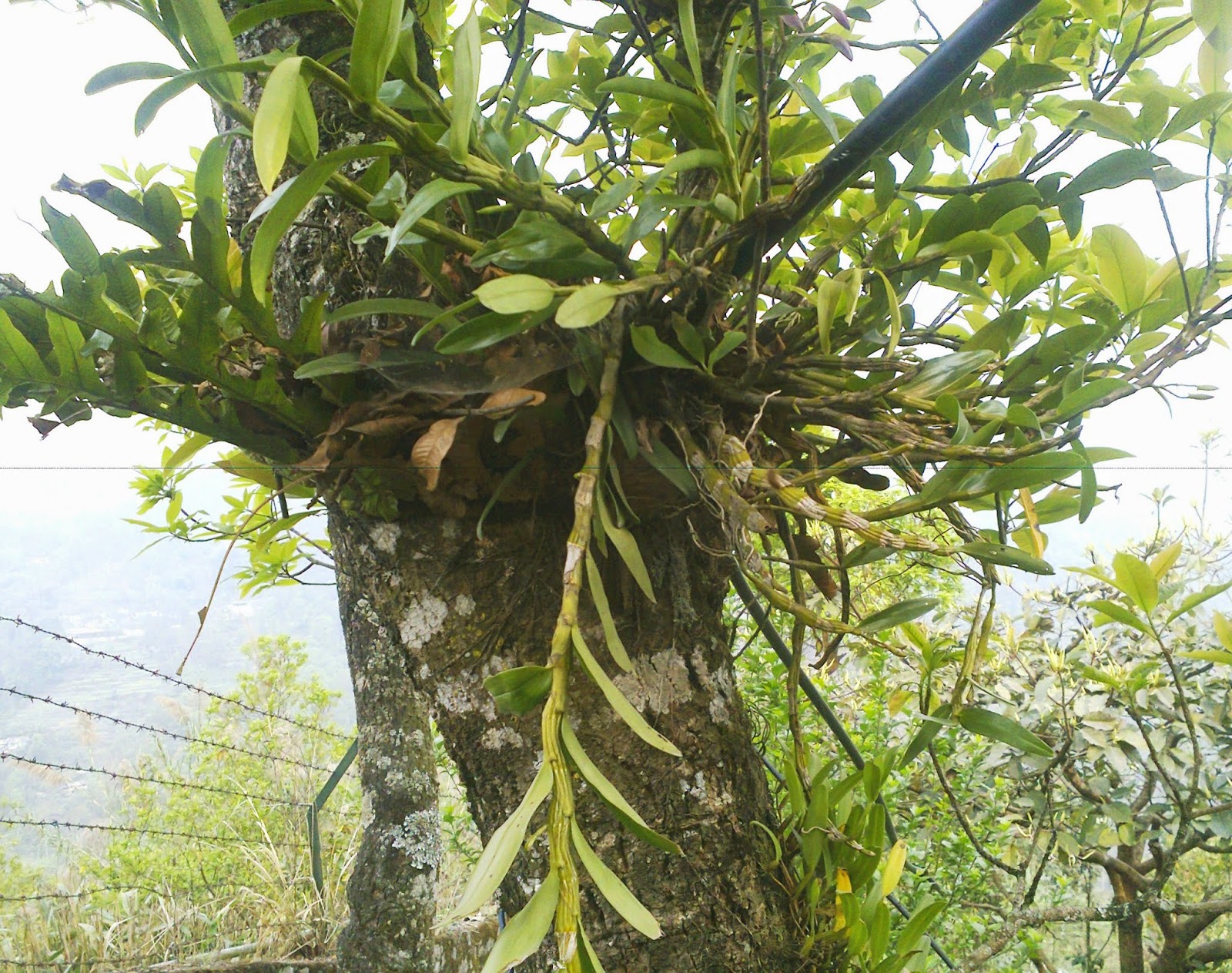






























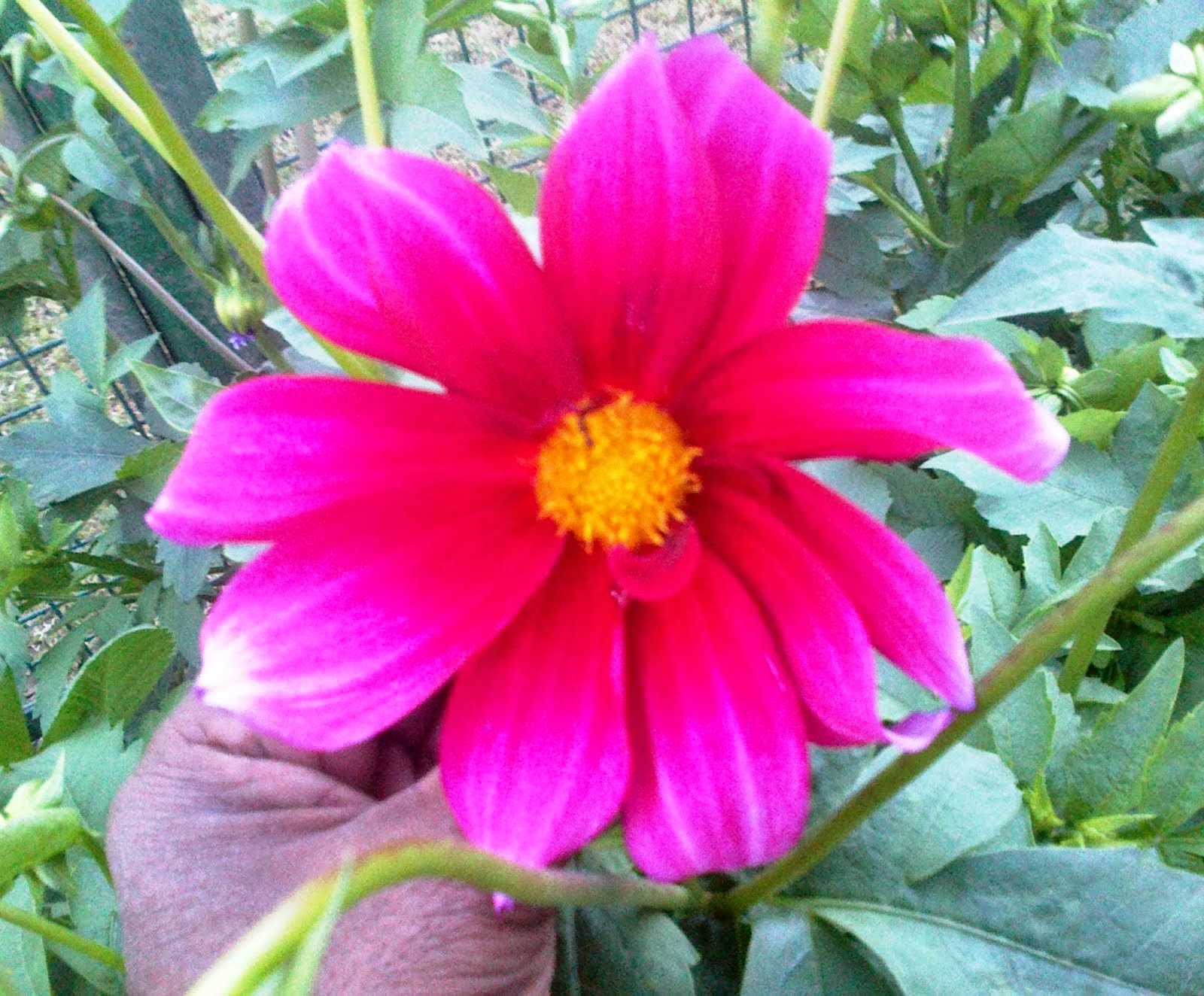



















































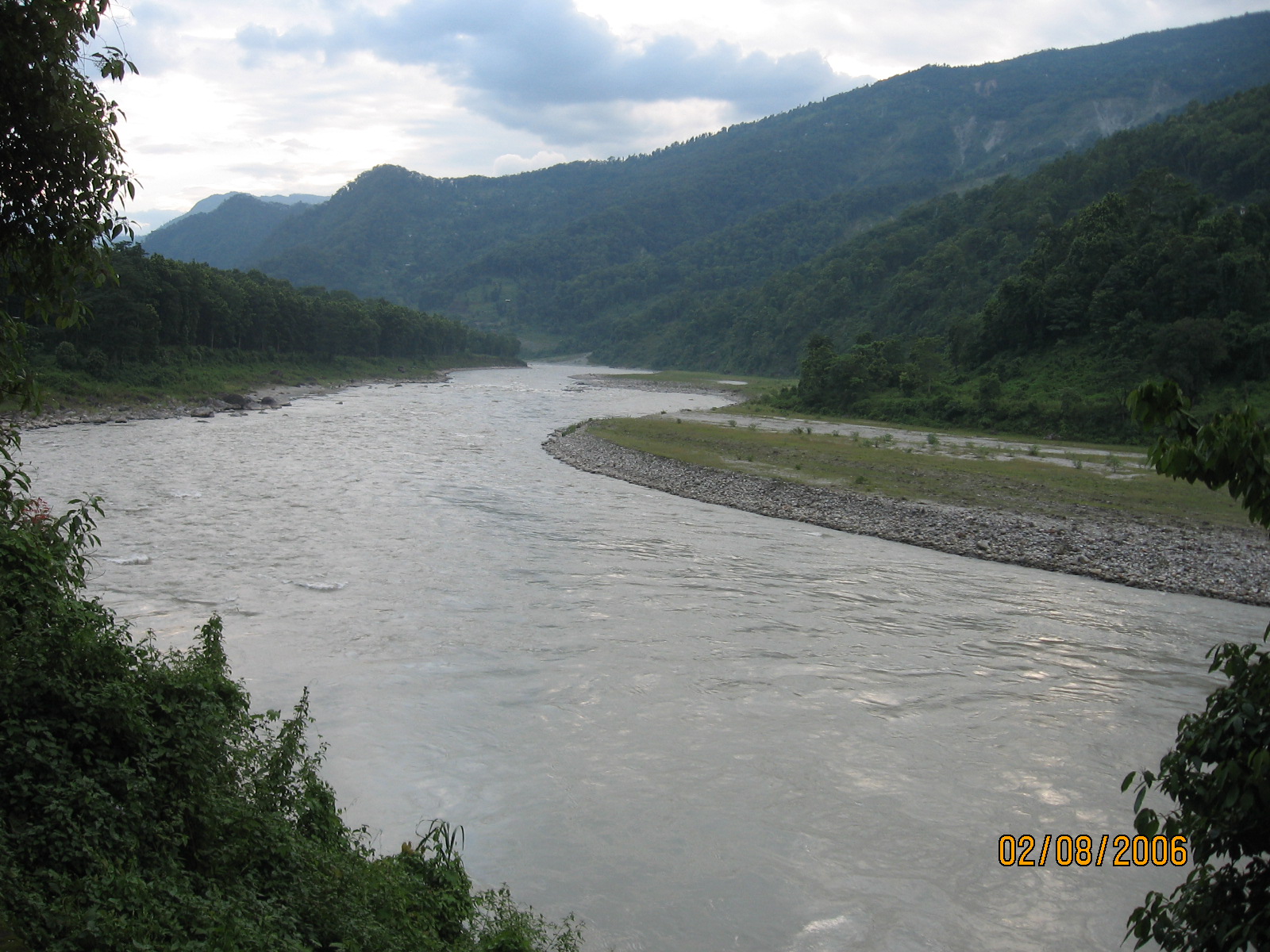


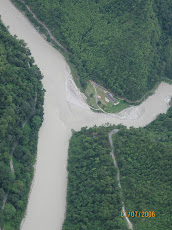
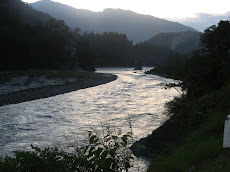
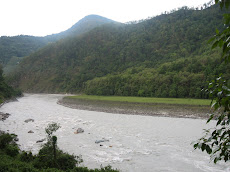
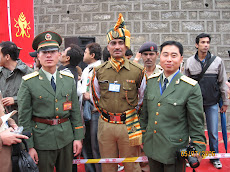
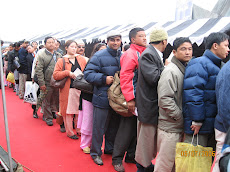
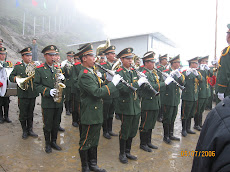


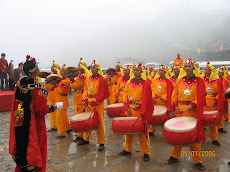
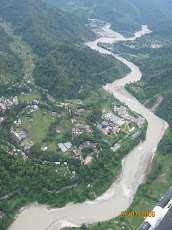




















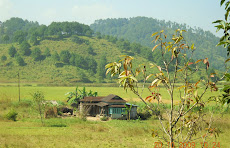
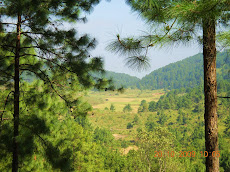








.jpg)








